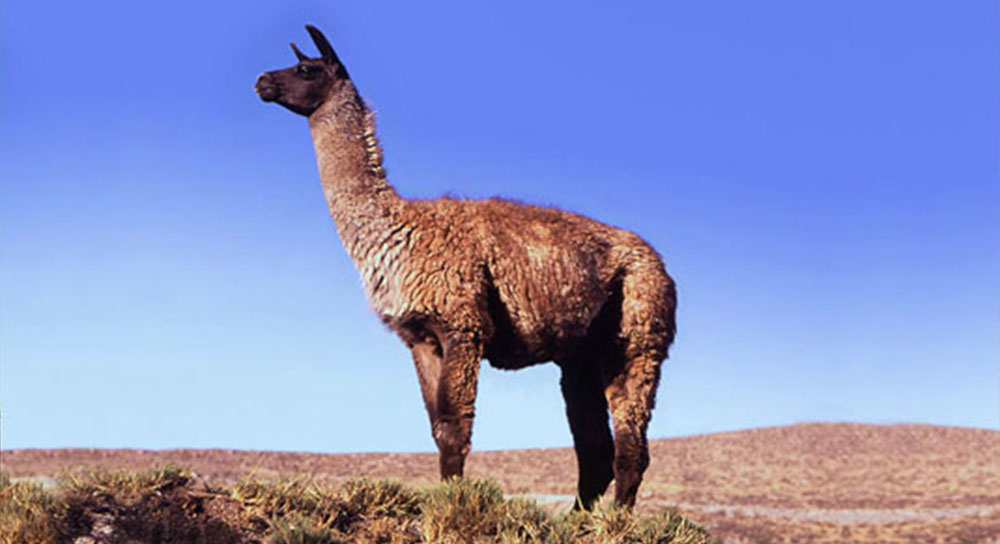SOUTH AMERICAN CAMELIDS: LLAMA (PART 3 OF 5)

In Part 1, we talked a little about Alpacas in general and shared some details on the Huacayo Alpaca. In Part 2, we talked about the Suri Alpaca and its dreadlock coat. Probably the best known South American camelid is the Llama. The Llama is the largest of the South American camelids and is considered a domesticated animal (like the Alpaca) dating back to pre-Inca times. The Llama holds a strong mystical presence in many Andean cultures; The Inca god Urcuchillay was often represented as a multicolored llama.
While the Alpaca is raised primarily for its fiber, the Llama is raised primarily as a pack animal. Prior to the introduction of horses and mules by the Spanish, the Llama was the sole Andean pack animal. It can comfortably carry a quarter of its body weight for miles. Today, there are approximately 900,000 Llamas in Peru, with a total world population estimated at 2.5 million.
While often portrayed as spitting, stubborn creatures, Llamas are in reality, quite intelligent, curious, gentle, and friendly herd animals. They recognize their owners and can learn simple tricks. Similar to Alpaca, there are two types of llamas: the Cara, with short hair, looks most like a camel, and the Chaku, with thick, long hair, looks almost like a large Alpaca. The color of the fiber ranges from white to black, including grey and brown tones.
Llama fiber is used on a small scale by the textile industry, primarily for carpets or ropes because of the generally thick nature of the fiber. Very fine Llama fiber exists, however, there is a laborious manual de-hairing process that has to be completed in order to remove the more common thicker fibers, thus the limited use in apparel and accessories.
Alpaca Collections doesn’t currently have any sweaters, coats or accessories with Llama, but we’ll be the first to let you know when we do. Be sure to keep checking.
Image Source: Thomas Quine

Comments
Leave A Reply
Your email address will not be published.